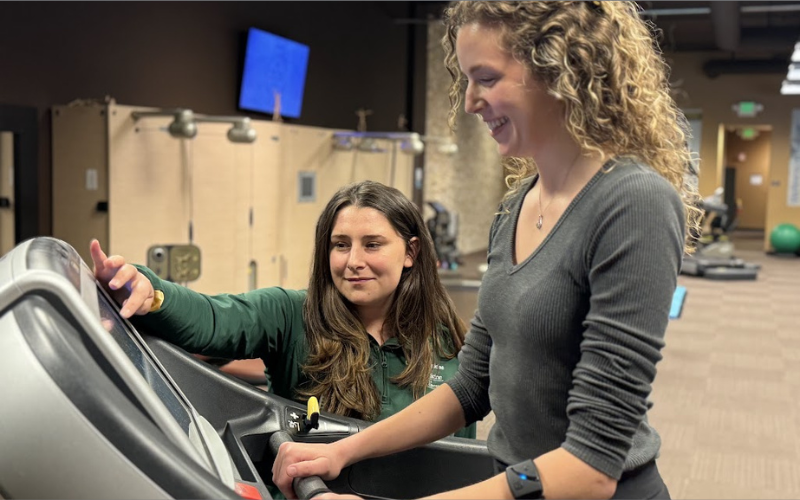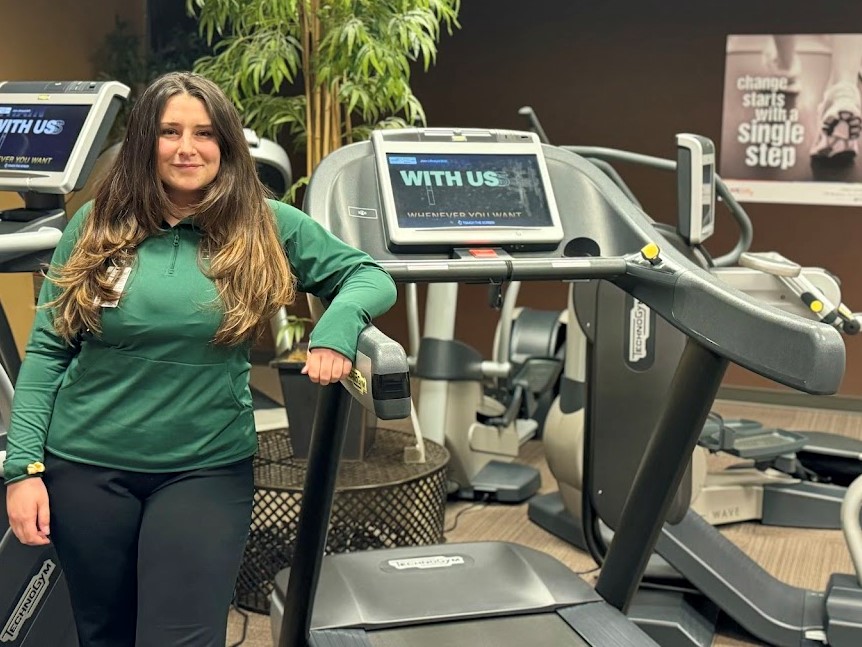
In the United States, heart disease remains the leading cause of death, posing a significant health challenge. However, there’s a powerful tool in the battle against this prevalent condition: understanding and monitoring your heart rate during exercise. Knowing your heart rate zones and how to exercise within them can have a profound impact on preventing or even reversing heart disease. This guide, written by Exercise Specialist Neenah Primas, delves into the essentials of heart rate zones and their importance in cardiovascular training, and how Valley’s Lifestyle Medicine Clinics can help you tailor your workout intensity to strengthen your heart, and offer a beacon of hope for those looking to enhance their heart health.
Know Your Zones
When starting an exercise program, it is important to understand what the different heart rate zones are and which zones you should aim for based on the results you are looking to achieve. There are five different heart rate zones that tell us how hard your heart is working to circulate blood and oxygen throughout your body. Each heart rate zone is based off a percentage of intensity using your maximum heart rate, but how your body uses energy is also an important factor. When we exercise, our bodies use two primary sources of energy. The first is the sugar that is already in our muscles and bloodstream; this is an energy source we can use right away. The second source of energy comes from fat stores. During activity, our bodies turn that fat into sugar so we can use it as energy, but that process can happen slowly or quickly depending on which zone you’re in. Together, these two factors can help determine which zone is most effective in helping you reach your fitness goals.
Zone 1 is commonly known as the warm-up zone. In this zone, the intensity level is low to moderate, which is about 50-60% of your maximum heart rate. As you begin to exercise, your body uses some of the sugar you already have in your blood and muscle tissue, but it will also begin to turn fat into more sugar for energy. Turning fat into sugar happens slowly in this zone, but that’s okay, because your body doesn’t need a lot of sugar to do work just yet. As a result, the calories burned in this zone are relatively low compared to other zones.
Zone 2 is known as the endurance zone. The intensity in this zone is about 60-70% of your maximum heart rate. Within this zone, you are still able to have a conversation, but you might need to stop to take a breath. Training in this zone can increase your endurance, and it’s great for recovery after exercise.
Zone 3 is known as the cardio zone, which is about 70-80% of your maximum heart rate, meaning it can be difficult to carry on a conversation. In this zone, your body is using equal amounts of fat and carbohydrates as an energy source. The benefits of working at a higher heart rate zone include improved circulation, endurance, and metabolism.
Zone 4 is high intensity, which is about 80-90% of your maximum heart rate, meaning it can be difficult to talk at all. In this zone, your body relies on the sources of energy it has the fastest access to, and your heart adapts to the increased physical demand by working harder and more efficiently to deliver nutrients and oxygen to your tissues and remove waste. The way the heart adapts in this zone creates the biggest benefit when it comes to preventing and reversing heart disease, so it is the zone we encourage people to aim for during exercise. This zone also allows you to continue to burn a lot of calories even after you are finished with your workout.
Zone 5 is an all-out effort, coming in at 90-100% of your maximum heart rate. Within this zone, your effort can only be sustained for a few minutes, and you are unable to talk. At this level, your body needs energy fast, so it will use carbohydrates to sustain you. Like zone 4, you will burn a high number of calories and continue to burn calories after your workout.
Exercising for Your Heart Rate Zone
Now that we know more about levels of intensity, we can discuss the different types of cardiovascular exercise that fit into each of these heart rate zones. Cardiovascular exercise refers to any activity that gets your heart rate up. When an exercise makes you breathe harder and your heart beat faster than usual, it helps to strengthen your heart and lungs. Cardiovascular exercises include a brisk walk, jogging, dancing, swimming, biking, sporting activities, and much more!

For cardiovascular training to be effective, it is important to look at the type, frequency, duration, and intensity of the exercise. As discussed, the level of intensity changes what heart rate zone we’re in, and the different zones help us understand where to focus our efforts based on the results we’re looking for. Knowing that all these activities can be done at different levels of intensity shows why it’s so important to track your heart rate while exercising.
Working with a professional is valuable because they can help you find what type of training works best for you, while also focusing on what you enjoy the most. When deciding how long you should be exercising in your target heart rate zone, it is important to know what goals you are looking to achieve. According to the American College of Sports Medicine, the gold standard for exercise guidelines, it is recommended that every adult gets at least 150 minutes of moderate physical activity per week, in heart rate zones 1 through 3, to maintain their cardiovascular health. If you are looking to make changes in your cardiovascular strength or the amount of muscle or fat in your body, it is recommended that you achieve closer to 250-350 minutes a week within zones 1-3.
Cardiovascular training can provide a wide range of health benefits. Some of these benefits include decreasing blood pressure and heart rate, improving cholesterol, managing blood sugar, and improving quality of sleep.
Tracking Your Heart Rate During Exercise – We Can Help!
At Valley’s Lifestyle Medicine Clinic, whether your goals are for health, fitness, or weight loss, our exercise specialists can help you decide what target heart rate is the most effective and safe for strengthening your heart. Target heart rate zones are not a one-size-fits-all; things such as age, lifestyle, medications, and health conditions can play a huge role in determining what zone is best for you.
At Lifestyle Medicine, we use a platform called Team Beats that displays your heart rate in real time while you exercise, both in and outside of the facility. You can also see your completed workouts in the MyWellness App whether it is in the gym setting, or outdoors! This type of monitoring allows both you and your exercise specialist to be aware of your heart rate during exercise so you can continue to track your progress together. This data can be used to track how many minutes per week you are getting, in what zone, and allow your exercise specialist to prescribe exercise based on your target heart rate zone.
Ready to get started?
If you are ready to learn how to improve your cardiovascular fitness, consider joining Lifestyle 365 at Valley’s Lifestyle Medicine Clinics. The Lifestyle 365 program helps you exercise with a purpose by connecting you to one of our exercise specialists, who can help you accurately identify your target heart rate zone and keep your heart healthy.

